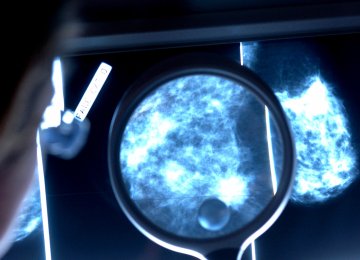How frequently should women get a mammogram? Guidelines differ, but a new study estimates thousands of US lives could be saved if mammograms were done every year from age 40 to 84.
“Screening annually starting at age 40 is the best strategy to avert an early breast cancer death,” said study co-author R. Edward Hendrick, a radiology professor at the University Of Colorado School Of Medicine.
In the United States, more than 40,600 women will die from breast cancer this year alone, according to the American Cancer Society. And about 252,700 new cases of invasive breast cancer will be diagnosed, HealthDay News reported.
Hendrick and his colleagues used computer modeling to assess the three major mammogram recommendations: annual screening from age 40 to 84; annual screening at ages 45 to 54, then every other year from 55 to 79; or every other year from 50 to 74.
“We know that screening mammography saves lives,” Hendrick said. “What’s still a mystery is how many breast cancer deaths are averted by screening mammography and appropriate treatment.”
The researchers estimated how many lives would be saved if every US woman born in 1960 followed one of the three recommendations each year.
Deaths from breast cancer would fall by an average of 40% with annual screenings from 40 to 84, the investigators reported.
By comparison, breast cancer mortality would decline 31% with screening until age 79. And it would drop 23% with every-other-year mammography from 50 to 74, which is recommended by the US Preventive Services Task Force.
The number of lives saved from breast cancer would be about 29,400 with annual screening from age 40 to 84; and about 22,800 and 17,200, respectively, for the other two recommendations, the researchers found.
Which approach women adopt “makes an enormous difference in terms of breast cancer deaths averted,” Hendrick said.
Currently, only about half of women over 40 get mammogram screening at least once every two years, even though one in eight is expected to develop breast cancer in their lives, Hendrick said.
“If a woman wants to maximize her chances of averting an untimely breast cancer death,” Hendrick said, “she should start screening at age 40 and continue screening annually until her life expectancy is less than five to seven years.”
The study has limitations, however. For example, it doesn’t examine costs, whether existing machines and staff members could handle an influx of mammogram patients, or whether the higher expense could be better spent elsewhere.
The study was published online Aug. 21 in the journal Cancer.






Add new comment
Read our comment policy before posting your viewpoints